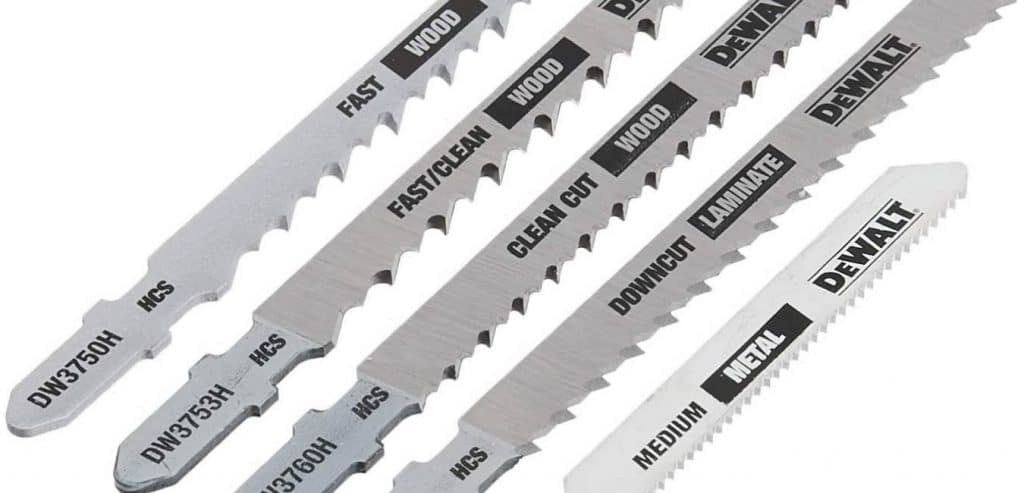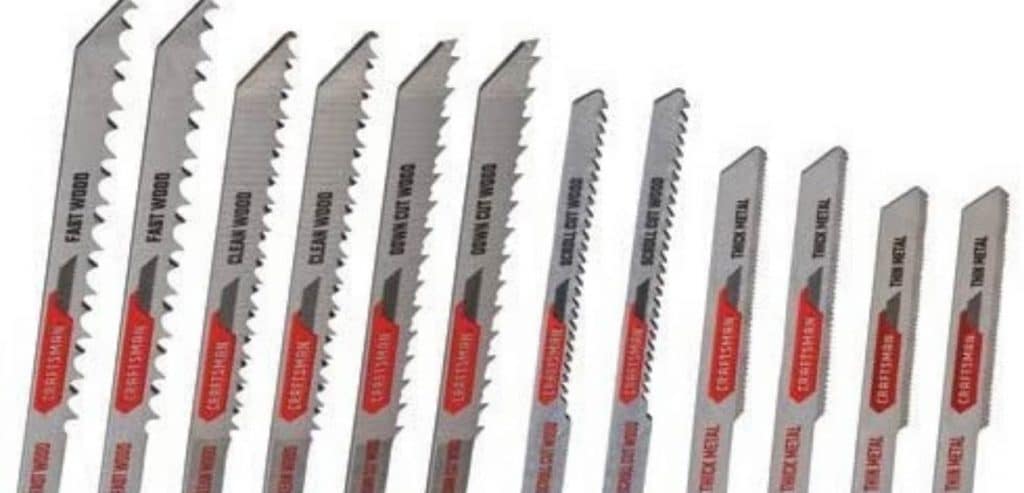As a Jigsaw user, you should know about the jigsaw blades! In this article, We covered on what are the different types of jigsaw blades use in jigsaw!
A jigsaw is a versatile tool that can handle a wide range of cutting applications. For this reason, the blade is a vital thing to consider when buying a jigsaw.
It affects the cutting speed, quality, precision, even dictate the type of materials you can cut. But not many people are familiar with the different kinds of blades available to the tool.
In this article, we will take a look at different types of jigsaw blades and which blades are suitable for what purpose. It will give you an idea of the kind of tool you would need for your next project and help you switch up the blade according to your specific needs.
Firstly, you need to understand that Jigsaw blades can be classified into several categories based on the shape of the shank, the blade material, or even the teeth of the blade. We will break it down into different sections and look at the options available to us.
Contents
Types of Jigsaw Blades Based on The Shank
The part of the blade that is attached securely to the blade clamp in a jigsaw is known as the shank. It is the primary way of categorizing the blade. There are two main types of the blade based on the shank of the jigsaw. They are:
- T-shank
- U-shank
T-shank blade type

This type is the most common of all blade types and is found in most modern units. They can be changed easily and are also very easy to use even for a new user. It comes with a tang located at the top of the shank. Due to this tang, it can fit in the blade camp without requiring any additional tools.
U-shank blade type

U-shank or universal shank blades feature a cut shaped like U at the top of the shank. The popularity of this type of blades took a massive hit because of the T-shank blades. This blade requires additional adjustments in the jigsaw for fitting, which makes them unattractive when compared to a T-shank blade.
Types of Jigsaw Blade Based On The Material
Another way of categorizing a jigsaw blade is by looking at the material used in its construction. The material of a jigsaw blade not only provides the cutting ability but also accounts for the durability of the blade, which is why it is a critical element to consider when buying a jigsaw blade.
Typically, a jigsaw blade comes with four different types of materials. They are x high carbon steel, high-speed steel, bi-metal, and tungsten carbide.
High Carbon Steel
The iron in this type of blade contains 0.55 to .95 percent carbon and .90 percent manganese. Due to the carbon concentration, these blades are generally quite flexible. It is perfect for cutting through soft materials with precision. They are also quite inexpensive compared to other materials. However, they tend to wear out quickly.
High-Speed Steel
Despite what the name suggests, high-speed steel does not make the cutting process faster. This type of blade is sturdier compared to high carbon steel blades and can cut through harder materials. The downside with this is they can generate a lot of heat while cutting, which wears them down.
Bi-Metal Blades
When it comes to heavy-duty cutting, Bi-metal blades are the king. These units feature a carbon steel body and high-speed steel teeth. Featuring the best of both worlds; this blade type shines both in flexibility and durability. However, they can get quite expensive, and for this reason, they are not very popular among beginners.
Tungsten Carbide
This type of blades come with a coating of carbide in the teeth. This coating allows them to have excellent heat resistance and also boosts their durability. The use of this blade type is limited to niche applications such as cutting ceramics or fiberglass.
Final Thoughts
Apart from the categories shown above, a jigsaw blade can also be classified into several types based on the number of teeth. With more teeth, you get a slower yet precise cut while fewer teeth make the cutting faster but rougher. There are also specialty blades for a jigsaw that serve a particular purpose.
As you can see, the blade comes in many different shapes to tackle a wide range of applications. We hope this article on the different types of Jigsaw blades helped you find the right one for your requirements.